|
As the highest court in the land, the United States Supreme Court plays a critical role in our constitutional form of government. It is independent of, but co-equal to Congress and the Executive Branch of our federal government. Without a deep commitment to the rule of law, and a belief that justice is truly equal under law, our system of government would collapse. The Supreme Court is the court of last resort for those seeking justice, and it protects the rights of citizens by striking down any law that violates the Constitution. Therefore, the Supreme Court must be seen as independent of outside influences, and it must adhere to the highest levels of transparency and ethical standards in rendering its decisions. Revelations in recent weeks of unreported gifts to Justice Clarence Thomas have raised questions by the American people and members of Congress about the integrity of the Supreme Court. ?In extensive reporting last month by ProPublica, it has come to light that Supreme Court Justice Clarence Thomas has for many years been the beneficiary of unreported gifts from Harlan Crow, a Texas billionaire with close ties to the Republican Party. These gifts included lavish international travel, real estate deals, and tuition payments made on behalf of Thomas’ grandnephew. Harlan Crow also funded a political group founded by Thomas’ wife which paid her a $120,000 salary. None of this has been disputed by Crow or Justice Thomas. On several occasions during his tenure at the Court, Clarence Thomas complained about the low pay for Supreme Court Justices, further fueling calls for Congressional investigations into his actions. Do these revelations about Justice Thomas represent possible conflicts of interest or unethical behavior? Possibly. But they don’t represent violations of any laws or codes of conduct applicable to the Supreme Court, and therein lies the problem. Calls for Change: On April 20th two senators introduced a bipartisan bill designed to force the Supreme Court to establish a code of ethics. Earlier this month the Democrat controlled Senate Judiciary Committee held hearings highlighting possible ethical lapses by Justice Clarence Thomas, and the need to adopt more transparency and clearly defined ethical standards. Chief Justice John G. Roberts Jr. declined an invitation to appear before the committee, citing issues related to the separation of powers and the importance of preserving judicial independence. It is no surprise that Republicans called the hearings a partisan attack on a conservative member of the Court, and promised to thwart any legislation that the Democrats put forth to constrain the Court in any way. Even though the hearings won’t produce any Congressional action, several Republican Senators, including Lindsey Graham of South Carolina, urged the Supreme Court to take actions to improve transparency and instill more public confidence. The Congressional hearings and public calls for the Supreme Court to be more transparent have not gone unnoticed by Chief Justice Roberts. In a rare written statement defending the Court, Roberts sent a letter to the chairman of the Senate Judiciary Committee which included a Statement on Ethics Principles and Practices signed by all nine Supreme Court Justices. The statement lists the statues and guidelines which the Court uses to address specific ethical issues. I applaud the Court for providing some of its principles and practices. But these are all voluntary guidelines and the Court is not compelled to follow them. The statement doesn’t address the apparent ethical issues surrounding gifts received by Justice Thomas. It is still unclear whether or not Chief Justice Roberts deems these gifts to be inappropriate, and if so, what corrective actions will be taken. What Can be Done? In 1973 The Code of Conduct for United States Judges was adopted by the Judicial Conference to promote public confidence in the integrity, independence, and impartiality of the federal judiciary. The Code governs the behavior of most federal judges, but it does not apply to the Justices of the Supreme Court. In fact, the Supreme Court is not bound by any formal code of conduct. There have been several attempts by Congress to impose a code of conduct on the Supreme Court, but most have run into legal problems. Separation of powers between the three branches of government prevents the Congress from mandating how the Court conducts its internal affairs. Even if the Congress was to pass legislation that directed the Court to adopt reforms, the Court could deem the legislation unconstitutional. What Should be Done? Even if Constitutional issues could be overcome, Congress is too polarized to pass any meaningful legislation that would impact the Supreme Court. The Supreme Court clearly has a credibility issue with the American people. It is not up to Congress to remedy this situation. It is the responsibility of Chief Justice Roberts, and his legacy depends on it. Here are two suggestions:
For the credibility of the Supreme Court, this should be done quickly and communicated to the American people. The Supreme Court is the only branch of the federal government that is unelected and unaccountable to the American people. Therefore, it must be above reproach and its actions and deliberations should be transparent. Unreported gifts to Justice Clarence Thomas have brought into question the integrity of the Court in recent weeks. The fallout from these revelations is of the Court’s own making, and only the Court can remedy the situation. Chief Justice Roberts must take clear and decisive action to preserve the integrity of the Court, otherwise our system of government could be in peril. Update November 13, 2023: The Supreme Court announced today that it had issued an ethics code for its justices. All nine justices signed on to the new rules.
It has been a long time coming, and is evidence that the Court is listening to the American people and the Congress. The code is not perfect, but it is certainly a step in the right direction. The main complaint against the new code is that it has no enforcement mechanism and is therefore toothless. It is doubtful that if the code had previously been in place, it would have curbed the behavior of Justice Thomas (outlined in the blog). Here is a link to the new code of ethics: https://www.supremecourt.gov/about/Code-of-Conduct-for-Justices_November_13_2023.pdf If you enjoy reading this type of commentary please subscribe to my blog and tell a friend. You will receive an email notification when new blogs are posted. The email will come from the site’s email: armchairamerican1776 @gmail.com. Thanks, Armchair American
0 Comments
On November 25, 2020, in a 5-4 ruling, the U.S. Supreme Court sided with religious organizations in a case over COVID-19 restrictions put in place by New York Governor Andrew Cuomo. The recent appointment of Justice Amy Coney Barrett has given the court a conservative majority, so the ruling should not be surprising. Is this ruling a shadow of things to come for the high court or just a one-off event? Let’s take a closer look. I am not a lawyer. The extent of my legal training is a few graduate level courses in business and tax law. When I am confronted with a constitutional issue that I am not familiar with I first consult the relevant articles in the U.S. Constitution. Then I attempt to determine the intention of the writers of the Constitution by reviewing the Federalist Papers, and any other pertinent writings. Finally, I see if there have been any similar cases ruled on by the Supreme Court which may have established a precedent for the issue under review. Fortunately, I have already researched and addressed the constitutionality of pandemic restrictions in my previous blog "are-pandemic-restrictions-violating-your-first-amendment-rights.html". From the previous blog on this topic we know that states have broad powers to restrict individual liberties in the name of public health. In issues of medical and scientific uncertainties, state health officials should not be subject to second-guessing by an unelected federal judiciary which lacks the background, competence, and expertise to assess public health matters. Restraints may be placed on constitutional rights by the state for the common good. However, the restrictions have to be applied without preference to content or viewpoint. For example, if officials restrict indoor religious gatherings to 50 people, they must restrict all indoor gatherings to 50 people. This is where I think the State of New York crossed over the line. The state singled out houses of worship and imposed harsh restrictions on indoor religious gatherings. Let’s take a look at the case. Roman Catholic Diocese of Brooklyn, New York v. Andrew M. Cuomo, Governor of New York : www.supremecourt.gov/opinions/20pdf/20a87_4g15.pdf The Catholic Diocese of Brooklyn, along with Agudath Israel of America sought to overturn an Executive Order issued by Governor Cuomo which imposed restrictions on attendance at indoor religious services taking place in “red” or “orange” zones. In red zones, no more than ten people could attend each religious service, and in orange zones, attendance was limited to twenty-five. The religious groups claimed that this was in violation of the Free Exercise (of religion) Clause of the First Amendment. They argued that the regulations treated houses of worship much more harshly than comparable secular facilities. Five of the nine justices agreed, writing that “…the regulations cannot be viewed as neutral because they single out houses of worship for especially harsh treatment”. As an example, in an orange zone attendance at houses of worship is limited to twenty-five people, even though non-essential businesses may decide for themselves how many people to admit. It should be noted that before this case was decided, Governor Cuomo reclassified the areas in question from orange to yellow, allowing for religious services to take place at 50% of their maximum capacity. However, the Court went forward with the case because the Governor could enact more restrictive classifications at any time. Implications of the Ruling: The case’s immediate impact is narrow, setting aside two specific restrictions on attendance at houses of worship in New York. The ruling did not overturn all pandemic restrictions at houses of worship, such as mask wearing and social distancing mandates. I don’t think that this case sheds any additional light on how Justice Amy Coney Barrett will rule in future cases. She did vote with the conservative majority, but did not issue her own opinion. The most telling opinion was written by Trump appointee Neil Gorsuch. He wrote, “Government is not free to disregard the First Amendment in times of crisis”. He went on to write that the court precedent that Chief Justice Roberts cited in a related California case, “…hardly supports cutting the Constitution loose during a pandemic”. You may read the full text of the case and accompanying opinions at the link cited above. Earlier in the year the Supreme Court upheld indoor religious service restrictions in California and Nevada: (https://www.supremecourt.gov/opinions/19pdf/19a1044_pok0.pdf). These restrictions were not as severe as the ones in New York, and applied equally to religious and secular organizations. The new conservative court may have a different view. The New York case will certainly embolden religious groups, and we will soon see challenges to California’s restrictions on indoor religious gatherings. Just this Thursday the AP reported that the Supreme Court ordered a lower federal court to reexamine California restrictions on indoor religious services in light of the recent ruling in New York. With COVID-19 cases surging in California, it is uncertain if the Governor’s restrictions will stand. What does seem certain is that Chief Justice Roberts will have a challenging time holding sway over the five conservative justices, and his position as the swing voter on the Court has been neutered. I agree with the Supreme Court’s ruling overturning New York’s attendance restrictions on religious gatherings. These restrictions specifically targeted houses of worship in violation of their First Amendment rights. New York classified such businesses as liquor stores, bicycle repair shops, hardware stores, and acupuncturists as “essential”, and therefore not subject to capacity restrictions. This seems arbitrary. Does it make any kind of sense to restrict a 1000 seat church to ten or even twenty-five attendees when it is legal to cram 200 people into the passenger cabin of a jetliner for a six-hour transcontinental flight? Not to get sidetracked, but most airline travel today is nonessential, and a passenger may take off their mask to eat or drink. Sounds like an indoor restaurant to me, but restaurants are no longer allowed to offer indoor dining. My point is, that it is a slippery slope when we allow public officials to pick winners and losers. When that happens, we have a lot more to lose than just our religious freedoms. As for the new conservative court, governors have been warned that they better carefully consider any restrictions that interfere with the free exercise of religion, even during a pandemic. February 23, 2021 Update: On February 5, 2021 the Supreme Court ruled that California’s ban on indoor church services violated the free exercise of religion guaranteed by the First Amendment. But the Court kept in place prohibitions on singing and chanting, and allowed the state to limit indoor services to 25% of the building’s capacity. This is not surprising in light of a similar ruling in New York last November.
The decision was 6-3, with the majority arguing that California had singled out places of worship for unfair treatment. This is hard to argue against since some religious buildings are the size of whole city blocks, and restricting any attendance in such buildings seems arbitrary and not grounded in science. The Court’s three liberal decenters stuck to the belief that the Court should not overrule the public health experts during an ongoing pandemic. If you enjoy reading this type of commentary please subscribe to my blog and tell a friend. You will receive an email notification when new blogs are posted. The email will come from the site’s email: armchairamerican1776 American @gmail.com. Thanks, Armchair American Today President Trump nominated Judge Amy Coney Barrett to replace Supreme Court Justice Ruth Bader Ginsburg who passed away last week. The Constitution gives the president the right to nominate and appoint Supreme Court Justices with the advice and consent of the Senate. What makes this nomination unusual is the fact that the presidential election is only 38 days away. There has never been a nomination made for a vacancy to the Supreme Court this close to a presidential election. Senate majority leader Mitch McConnell (R-Kentucky) has said in recent days that President Trump’s nominee will receive a vote on the floor of the United States Senate. All indications are that the confirmation hearings will begin the week of October 12, and a final vote by the full Senate should take place by the end of the month, a few short days before the election. The Senate has a constitutional duty to fulfill this function, so what is the problem? Blocking President Obama’s Supreme Court Nominee: Within an hour of the death of Supreme Court Justice Antonin Scalia on February 13, 2016, Senate Majority leader Mitch McConnell said that the Senate should not confirm a replacement until after the 2016 presidential election. At the time he said “The American people should have a voice in the selection of their next Supreme Court Justice. Therefore, this vacancy should not be filled until we have a new president,” (https://www.politico.com/story/2016/02/mitch-mcconnell-antonin-scalia-supreme-court-nomination-219248). On March 16, 2016 President Obama nominated U.S. Court of Appeals Judge Merrick Garland to fill the vacant seat on the Supreme Court. Soon after, Senator McConnell stated “It is a president’s constitutional right to nominate a Supreme Court Justice, and it is the Senate’s constitutional right to act as a check on a president and withhold its consent.” (https://www.wbur.org/npr/470664561/mcconnell-blocking-supreme-court-nomination-about-a-principle-not-a-person). Senator McConnell further stated “The America people are perfectly capable of having their say on this issue, so let’s give them a voice. Let’s let the American people decide. The Senate will appropriately revisit the matter when it considers the qualifications of the nominee the next president nominates, whoever that may be”. Then on March 23, 2016, after meeting in a closed-door session with Senate Republicans, Senator McConnell said “I believe the overwhelming view of the Republican conference in the Senate is that this nomination should not be filled; this vacancy should not be filled by this lame duck president.” That same day the Chairman of the Senate Judiciary Committee, Charles Grassley(R-Iowa), said that his panel would not move forward with any consideration of President Obama’s nominee.” Senators McConnell and Grassley coauthored an op-ed in the Washington Post around that time. In it they stated “Given that we are in the midst of the presidential election process, we believe that the American people should seize the opportunity to weigh in on whom they trust to nominate the next person for a lifetime appointment to the Supreme Court.” Another argument used by Senator McConnell in 2016 to justify blocking the nomination of Judge Garland was, “All we are doing is following the long-standing tradition of not fulfilling a nomination in the middle of a presidential year.” The problem is, no such tradition exists, (https://www.brookings.edu/blog/fixgov/2020/09/24/mcconnells-fabricated-history-to-justify-a-2020-supreme-court-vote/). What Does History Tell Us: According to the NYU Law Review, in the post- Civil War era there have been nine Supreme Court vacancies in place during presidential election years. For eight of those vacancies the nomination process began during the election year. In all of these cases the president was able to fill the vacancy during the election year. ( https://papers.ssrn.com/sol3/papers.cfm?abstract_id=2752287). Recently Senator McConnell has come up with a different precedent to justify his treatment of Judge Garland. According to the senator, since the 1880’s no Senate has confirmed an opposite-party president’s Supreme Court nominee in a presidential year. So, the Senate’s new precedent states that if the president’s party controls the Senate during an election year, the president gets to fill a Supreme Court vacancy. But when the opposite party controls the Senate during an election year, the president’s nominee cannot be confirmed by the Senate. There is no basis in the Constitution or in precedent to back up Senator McConnell’s latest claim. What good is the Constitution, Senator McConnell, if you get to make up the rules as you go along? Senator McConnell Shows His True Colors: It should be no surprise that Senator Mitch McConnell is hyper-partisan and places party loyalty above all else. During President Obama’s first term, Senator McConnell stated that his prime motive was to deny the president a 2nd term. So much for doing what’s best for the country! During a speech in 2016 the senator stated, “One of my proudest moments was when I looked Barack Obama in the eye and I said, Mr. President, you will not fill the Supreme Court vacancy.” Last year Senator McConnell used his blocking of the Garland confirmation to raise campaign funds. In campaign literature he wrote, “If there’s a vacancy on the Supreme Court in 2020, I will proudly confirm President Trump’s nominee. Sure the left and their allies in the media will go crazy. The Democrats will raise millions to defeat me. That won’t stop us from putting another conservative Justice on the Supreme Court” (https://www.usatoday.com/story/news/politics/2019/05/29/mcconnell-blocked-obama-supreme-court-choice-wouldnt-stop-trump/1268883001/). President Trump Nominates Judge Amy Coney Barrett to Fill Supreme Court Vacancy: President Trump announced the nomination today, just 38 days before the presidential election on November 3, 2020. This is the closest Supreme Court vacancy to a presidential election since 1864. But at that time President Lincoln would not put forth a nominee to fill the vacancy until after the election. There is no precedent for any Supreme Court nominee being confirmed between July and election day. There may simply not be enough time to properly vet a nominee to a lifetime appointment before the election, as the Republicans are attempting to do. Since 1975 it has taken an average of sixty-seven days for a nominee to receive a confirmation vote in the Senate. But Senator McConnell has already stated that the president’s nominee will receive a vote on the floor of the Senate, and he is sticking by the precedent that he created to justify blocking Judge Garland’s confirmation. Since the Senate is controlled by the president’s party, the president is perfectly justified in nominating a Supreme Court Justice during a presidential election year, and the Senate is perfectly justified in doing everything possible to get the nominee confirmed. Yes, Senator McConnell, the Constitution is blind regarding political party on this issue, too bad you can’t be. According to the latest news, confirmation hearings for Judge Amy Coney Barrett will begin in the Senate on October 12, 2020 and a full Senate vote will take place by the end of October, a few short days from the election. Mitch McConnel is not alone in his hypocrisy. All but two Republican Senators have pledged to see the confirmation process through to the end. Senator Lindsey Graham (R-South Carolina), the Chairman of the Judiciary Committee, is front and center when it comes to hypocrisy. In 2016 following the death of Justice Scalia, Senator Graham stated “If there’s a Republican president in 2016 and a vacancy occurs in the last year of the first term, let’s let the next president, whoever it might be, make the nomination.” During the 2018 Judge Kavanaugh confirmation hearings, Senator Graham stated “If an opening comes in the last year of President Trump’s term, if the primary process is started, we will wait to the next election.” With the prospect of confirming a conservative justice to the bench, Senator Graham has done an about face. He is leading the charge to make sure that Judge Barrett gets through the confirmation process and has a vote by the full Senate. Senator Graham is in a tough reelection campaign, so we shouldn’t be surprised that politics trumps principles. Democrat Reprisals: As you would expect, Democrats in the Senate and across the country are screaming foul and calling out the Republicans for their blatant hypocrisy. But scream as they might, there’s not a lot the Democrats can do to stop the confirmation process. The president has the right under the Constriction to put forth a nominee, and the Senate has the right to consider the nomination and consent or not. It only takes a simple majority vote in the Senate to approve the appointment, and it appears as if Leader McConnell has the votes. Already the Democrats are threatening reprisals if and when they take back control of the Senate. Here are a few:
A Win for the President: Getting a third conservative justice appointed to the Supreme Court will be a huge victory for President Trump. During a Fox News Radio interview last Thursday, the president indicated that he would agree with a Supreme Court ruling that Biden won the election. But short of a court decision, the vote would amount to a “horror show” because of fraudulent ballots, according to the president. He really believes that the election results will be contested, and he is doing everything within his power to assure that outcome. That is why the president needs nine Justices on the Supreme Court prior to the election. In Donald Trump’s world a Supreme Court Justice that he appoints is beholden to him. Much like the Attorney General and the FBI Director, who the president expects to do his bidding. The idea of an independent Justice Department doesn’t enter into his calculus, and neither does an independent judiciary. Donald Trump believes that if the election is contested and goes to the Supreme Court, that he will win due to the court’s ideologic makeup or out of loyalty to him. If the Supreme Court Justices actually rule on cases based on their political affiliations, then this country is really in deep trouble. Judge Amy Coney Barrett is by all accounts a very conservative judge. But my main issue is not with the ideologic makeup of the Supreme Court. Call me naïve, but I have faith that the Justices rule on their honest interpretation of the Constitution and not on political motivations. I have an issue with Senator Mitch McConnell’s corruption of the Senate’s process for confirming Supreme Court Justices. I fear for what it will do to the proceedings of the Senate going forward. The Senate is a separate branch of government from the Executive branch, not a rubber stamp for it. If the Senate acts in lockstep with the president, where are the checks and balances, and who is protecting the country from Executive overreach? To act one way when the president is a Democrat and another way when the president is Republican, puts party over country and is just plain wrong.
If you enjoy reading this type of commentary please subscribe to my blog and tell a friend. You will receive an email notification when new blogs are posted. The email will come from the site’s email: [email protected]. Thanks, Armchair American |
AuthorThe Armchair American. Archives
November 2024
Categories
All
|



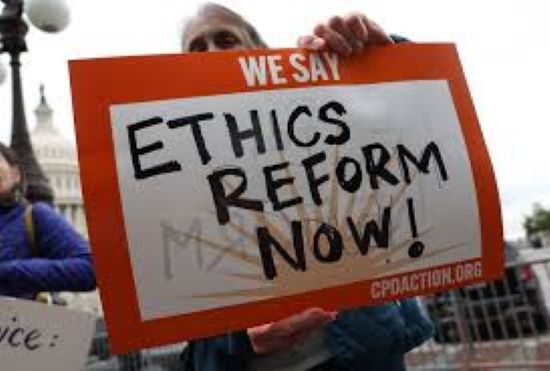






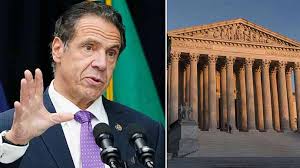

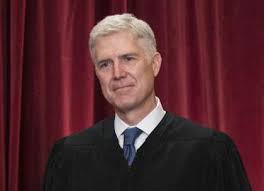



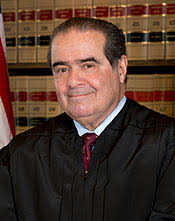
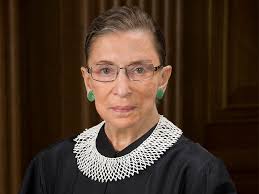
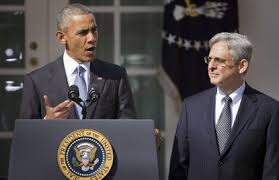
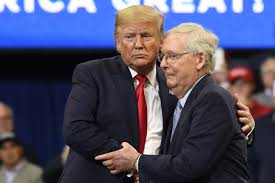

 RSS Feed
RSS Feed